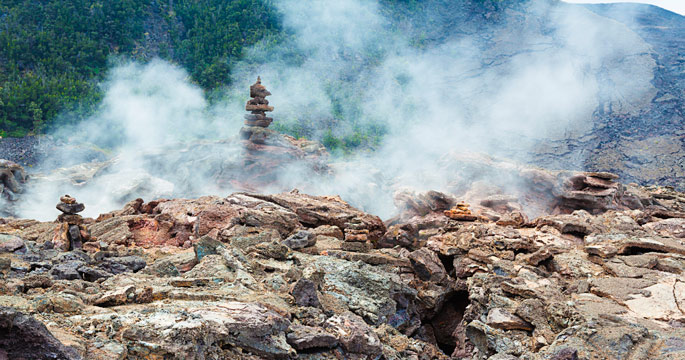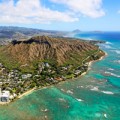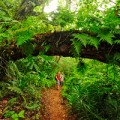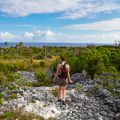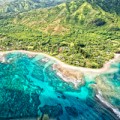A moderately challenging yet ultimately rewarding walk into a surreal landscape
Hawaii Volcanoes National Park is home to Kilauea, one of the world’s most active volcanoes. The boiling lava lake at the summit is best observed from a safe distance, but hikers can trek right across another once-boiling lava lake that showcases the fascinating aftermath of a major eruption.
The Kilauea Iki Trail is a four-mile loop that follows the rim of Little Kilauea Crater, and then drops into its interior, which was the site of a major eruption in 1959. That eruption sent fiery plumes 1,900 feet in the air, and filled the crater with molten lava. Today, the crater can be reached by an easy drive along Crater Rim Road. The trail is a loop that can be walked in either direction, but the preferred route runs counter-clockwise, where the trail winds through a rain forest where lush tropical growth thrive sin the rich volcanic soil.
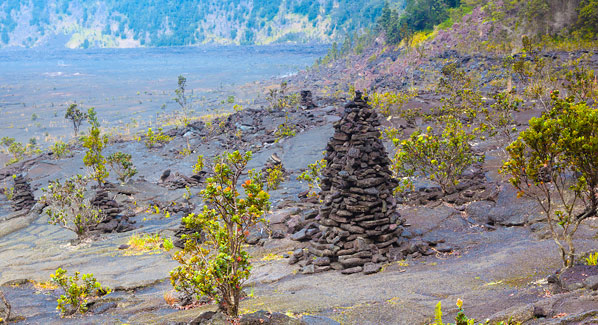
Ohi’a lehua plants sprout from volcanic ash in Kilauea Crater. These plants are uniquely adapted to withstand the sulfurous atmosphere of the crater. Photo: George Burba/iStock
At the 1.5-mile point, walkers will begin a descent into the crater, and the trail then leads across the lava lake, which, though hardened and safe to traverse, is still pocked with crevices that vent steaming sulfurous gases. Yet even this barren terrain shows signs of life in the form of ohi’a lehua plants, which are uniquely adapted to tolerate the noxious fumes. After crossing the lava lake, the trail begins a 400-foot climb back to the rim. At the summit, hikers can recover from the climb while admiring sweeping views of the crater, and consider making a short side trip to the Thurston Lava Tube, or complete the loop with a quarter-mile trek back to the trailhead.
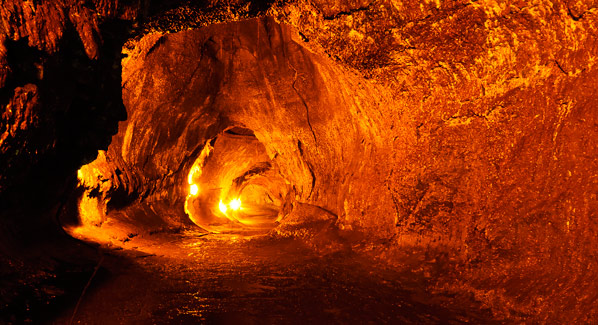
Molten rock once flowed through the Thurston Lava Tube. Today, a lighted trial through its interior provides a fascinating glimpse into volcanic geology. Photo: Shutterstock
Shade and breezes can make for a refreshing trek along upper portions of the hike, but its advisable to bring plenty of water and some form of sun protection for the crater crossing. Those looking for a shorter route to the crater floor can park near the Thurston Lava Tube and make a one-mile down-and-back foray into the crater.

